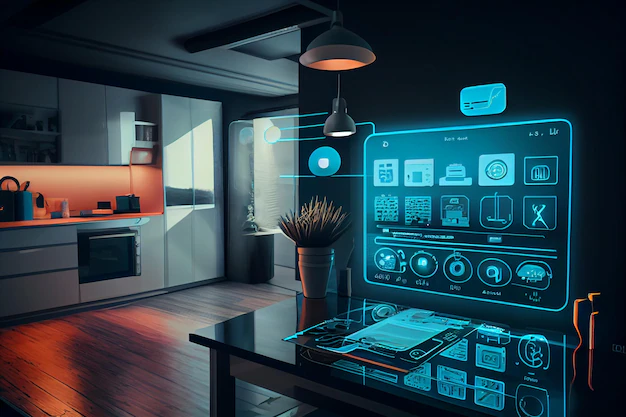How to Enhance Smart Home Integration Technology in your Kitchen Home Remodeling: Family Psychology
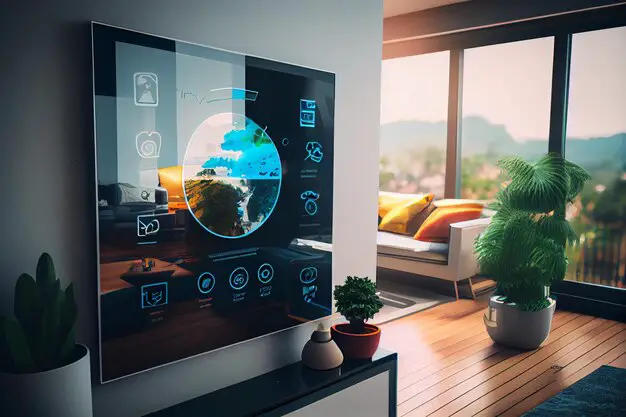
Page Contents
- 1 Intersection of Psychology and Home in the Digital Era
- 2 Smart Appliances and Technology Integration
- 3 How to Enhance Smart Home Integration Technology in your Kitchen Home Remodeling in the New Age
- 4 Embrace the Future: 8 Smart Kitchen Solutions
- 5 Conclusion
Intersection of Psychology and Home in the Digital Era
In the contemporary era, the intersection of psychology, familial comfort, and the embrace of the digital new age finds a harmonious expression in the remodeled home that incites a vitalizing aura. This innovative approach to home design acknowledges the profound impact of surroundings on mental well-being. The remodeled home becomes a sanctuary, seamlessly blending modern technology with psychological considerations. Smart fixtures and ambient lighting create an environment tailored to individual preferences, promoting relaxation and rejuvenation.
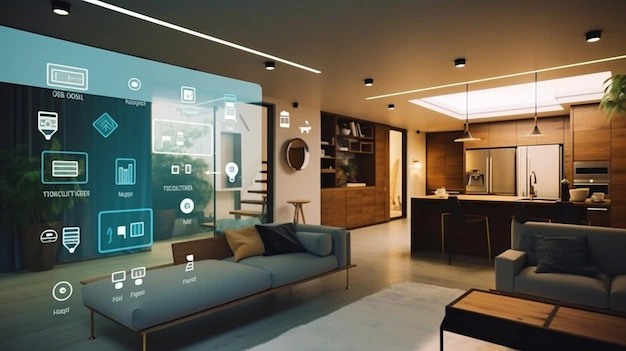
In the context of family dynamics, this space becomes a focal point for shared moments of tranquility, fostering a sense of togetherness amidst the fast-paced digital age. By seamlessly integrating technology and thoughtful design, the remodeled home becomes a haven that not only caters to contemporary needs but also nurtures the psychological well-being of the family within the comfort of their home.
Smart Appliances and Technology Integration
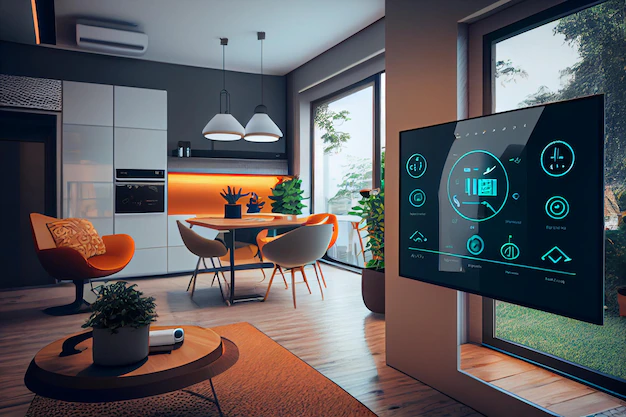
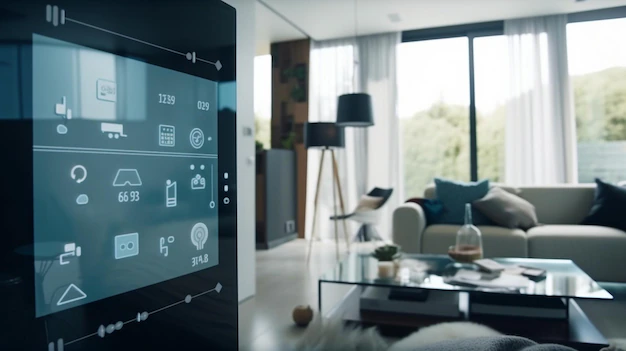
In the digital age, the kitchen has evolved beyond its traditional role, now integrating cutting-edge technology for enhanced functionality and efficiency. Incorporating smart appliances and devices revolutionizes the way the kitchen operates, offering convenience, control, and connectivity for the humanity and or families in their own homes and more so for the millennials of today.
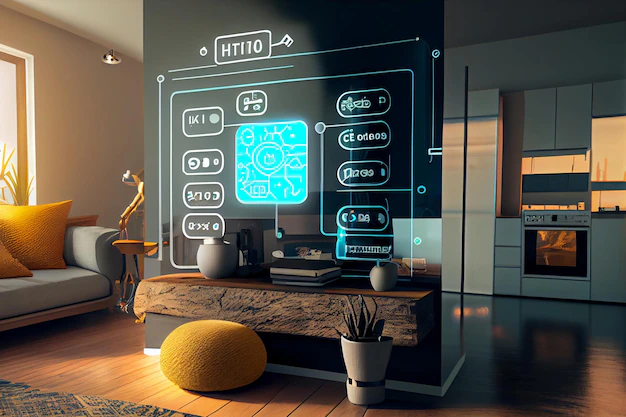
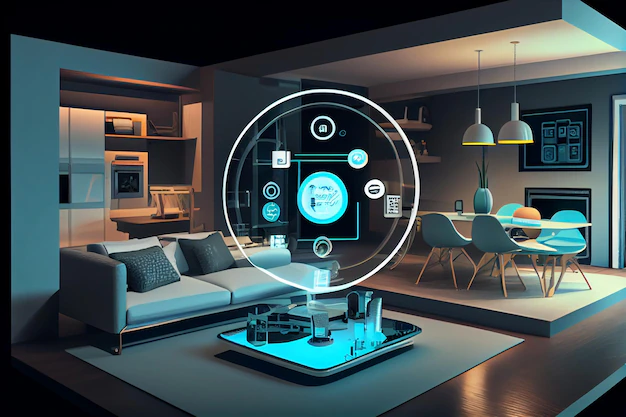
How to Enhance Smart Home Integration Technology in your Kitchen Home Remodeling in the New Age
Embrace the Future: 8 Smart Kitchen Solutions
1. Smart Refrigerators
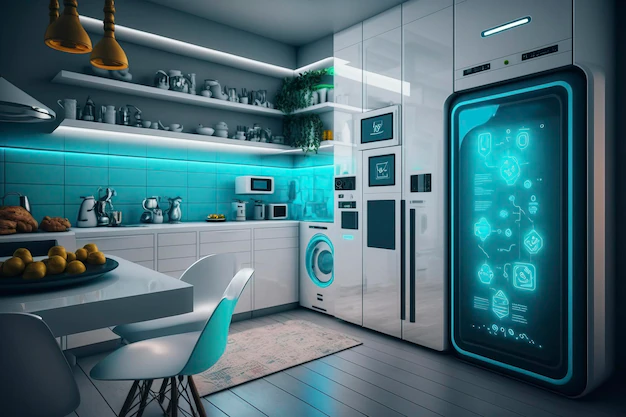
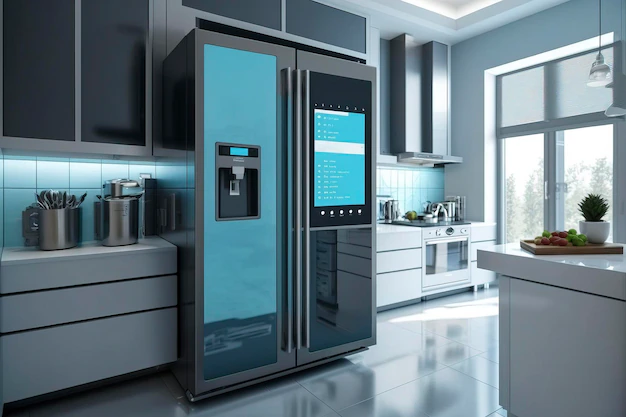
Invest in smart refrigerators equipped with touchscreen displays, cameras, and app integration. These refrigerators allow you to peek inside remotely, create grocery lists, set expiration reminders, and even suggest recipes based on available ingredients.
The cost of smart refrigerators can vary significantly based on several factors, including brand, size, features, and technological advancements. On average, smart refrigerators tend to be more expensive than traditional models due to their added functionalities and advanced technology.
Here’s a rough estimate of the price range for smart refrigerators:
- Entry-Level Models: Basic smart refrigerators with limited features might start around $1,000 to $2,000.
- Mid-Range Models: More advanced models with larger capacities, better energy efficiency, and additional features such as touchscreen displays, internal cameras, and app integration can range from $2,000 to $5,000.
- High-End Models: Top-of-the-line smart refrigerators with cutting-edge technology, voice control integration, advanced inventory management, and extensive connectivity options can go upwards of $5,000 or more.
The prices can also vary based on the brand, specific features, additional warranties, and installation costs. Some well-known brands offering smart refrigerators include SAMSUNG, LG, , Whirlpool, and KitchenAid, among others.
It’s essential to consider your specific needs, desired features, and budget constraints when selecting a smart refrigerator. Additionally, comparing prices from various retailers and keeping an eye out for promotions or sales events can help in making a cost-effective purchase decision.
2. Wi-Fi-Enabled Ovens and Cooktops
Upgrade to ovens and cooktops with Wi-Fi connectivity, enabling remote monitoring and control via smartphone apps. Preheat your oven on your way home, adjust cooking settings, or receive alerts when your meal is ready, streamlining the cooking process.
The cost of Wi-Fi-enabled ovens and cooktops can vary based on several factors, including brand, size, features, and technological capabilities. Generally, these smart appliances tend to be more expensive than traditional models due to their advanced features and connectivity options.
Here’s a rough estimate of the price range for Wi-Fi-enabled ovens and cooktops:
- Wi-Fi-Enabled Ovens: Entry-level models with Wi-Fi connectivity may start around $1,000 to $2,000. These models typically offer basic remote monitoring and control features.
- Mid-Range Wi-Fi-Enabled Ovens: More advanced models with larger capacities, better technology integration, touchscreen displays, and additional cooking modes might range from $2,000 to $3,500.
- High-End Wi-Fi-Enabled Ovens: Top-tier models equipped with the latest technology, smart cooking features, voice control integration, and extensive connectivity options can be priced higher, reaching $3,500 to $5,000 or more.
- Wi-Fi-Enabled Cooktops: Cooktops with Wi-Fi connectivity may vary in price based on the number of burners, size, and advanced features. They generally start around $1,000 and can go up to $3,000 or more for models with innovative features and technology integration.
These estimates are approximate and can fluctuate based on the brand, specific features, and any additional warranties or installation costs. Brands like SAMSUNG, GE, Bosch, and KitchenAid often offer Wi-Fi-enabled smart kitchen appliances.
As with any major appliance purchase, it’s essential to consider your specific needs, desired features, and budget constraints when looking for Wi-Fi-enabled ovens and cooktops. Comparing prices, checking for promotions, and considering long-term benefits can help in making an informed decision.
3. Voice-Activated Faucets
Install voice-activated faucets that respond to commands, allowing hands-free operation for tasks like filling pots or controlling water flow and temperature, providing convenience and promoting hygiene.
Voice-activated faucets, which offer hands-free operation through voice commands, can vary in price depending on the brand, features, and technology integration. These faucets are part of the smart home trend, aiming to provide convenience and ease of use in the kitchen.
Here’s a general price range for voice-activated faucets:
Basic Models: Entry-level voice-activated faucets may start around $200 to $400. These models usually offer simple voice command functionalities and standard finishes.
Mid-Range Models: Faucets with more advanced features, such as multiple spray settings, better sensors, and improved voice recognition capabilities, can range from $400 to $800.
High-End Models: Top-tier voice-activated faucets equipped with sophisticated technology, durable finishes, advanced sensors, and extensive voice command options may cost $800 to $1,500 or more.
The prices can vary based on factors like the brand, the quality of materials used, additional features such as temperature control, motion sensors, or the type of voice recognition technology employed.
Brands like MOEN, Delta, Kohler, and Pfister are known for offering voice-activated faucets with various features and price points.
When considering a voice-activated faucet, it’s essential to factor in your specific preferences, the level of technology integration you desire, and your budget constraints. Researching different models, comparing features, and checking customer reviews can help in finding a faucet that best fits your needs. Additionally, keep an eye out for promotions or discounts that may be available.
4. Smart Lighting Systems
Integrate smart lighting systems that adjust brightness and color temperature according to different tasks or moods. Voice-controlled lighting or automated settings can create ambiance and improve energy efficiency.
The cost of smart lighting systems can vary widely depending on several factors such as the brand, type of smart lighting technology, the number of bulbs or fixtures, and additional features included. Smart lighting systems offer various functionalities such as remote control, color changing options, dimming capabilities, and integration with voice assistants or smart home ecosystems.
Here’s an approximate price range for smart lighting systems:
- Smart Bulbs: Individual smart bulbs with basic functionalities like dimming and color changing options can start around $10 to $20 per bulb for entry-level models. More advanced or branded bulbs can range from $20 to $50 per bulb.
- Smart Light Strips: LED light strips with smart capabilities for accent lighting or decorative purposes might start around $20 to $50 for basic options, while higher-end or longer strips with more features can cost $50 to $100 or more.
- Smart Switches and Dimmers: Individual smart switches or dimmers that replace existing switches can range from $30 to $100 each, depending on the brand, features, and compatibility with smart home systems.
- Smart Lighting Kits: Starter kits that include a hub and multiple bulbs or fixtures can vary significantly in price. Basic kits might start around $50 to $100, while more extensive kits with additional features or several bulbs can range from $100 to $300 or higher.
Brands such as PHILIPS Hue, LIFX, TP-Link Kasa, and Lutron Caseta are well-known for offering smart lighting solutions with a range of features and price points.
When considering smart lighting systems, it’s essential to assess your specific needs, such as the number of lights, desired features, and compatibility with existing smart home devices. Researching different options, comparing features, and considering the long-term benefits can help in selecting a smart lighting system that suits your preferences and budget. Additionally, be on the lookout for sales or discounts offered by retailers, which might help reduce costs.
Smart lighting systems commonly rely on electricity from a power source rather than solar energy. These smart bulbs, strips, switches, and kits typically require a consistent power supply to function and connect with smart home ecosystems or control platforms.
5. Connected Kitchen Hub
Create a central hub in the kitchen by installing smart displays or tablets. These devices can serve as recipe databases, digital cookbooks, entertainment centers, and control panels for smart home devices.
The cost of a connected kitchen hub can vary depending on the specific features, brand, and technology integration. A connected kitchen hub typically refers to a device, such as a smart display or tablet, that serves as a central control point for various smart kitchen devices, apps, recipes, and home automation functions.
Here’s a general estimate of the price range for connected kitchen hubs:
- Basic Models: Entry-level connected kitchen hubs, such as smaller smart displays or tablets with limited functionalities, might start around $100 to $200.
- Mid-Range Models: More advanced smart displays with larger screens, better resolution, enhanced compatibility with smart home systems, and additional features may range from $200 to $400.
- High-End Models: Top-tier connected kitchen hubs with larger screens, high-resolution displays, premium audio, and extensive integration with smart home ecosystems can cost $400 to $800 or more.
Brands like AMAZON (with their Echo Show series), GOOGLE (with Nest Hub), and other manufacturers provide various connected devices that can serve as a hub for your kitchen.
The price can also vary based on the specific functionalities, such as voice assistant integration (like Alexa or Google Assistant), screen size, audio quality, and additional features like video calling, recipe databases, or entertainment options.
When considering a connected kitchen hub, it’s essential to assess your specific needs, desired features, and compatibility with your existing smart home devices. Researching different models, comparing features, and checking customer reviews can help in finding a hub that best fits your needs. Additionally, keep an eye out for promotions or discounts that may be available.
6. Internet of Things (IoT) Integration
Utilize Internet of Things (IoT) technology to connect kitchen appliances and devices. Smart home hubs or systems like Amazon Alexa or Google Assistant allow seamless integration and control of various smart devices within the kitchen.
The cost of Internet of Things (IoT) integration can vary significantly based on several factors, including the complexity of the system, the number and types of devices being integrated, the platform or service provider chosen, and any additional customization or development required.
Here are some factors that can influence the cost of IoT integration:
- Hardware Costs: This includes the price of IoT devices, sensors, gateways, and other hardware components needed for connectivity.
- Software Development: Custom software or applications might be required for data collection, analysis, and device management. Development costs can vary based on the complexity of the solution and the expertise of the developers.
- Connectivity Services: Costs associated with data plans, network connectivity, or cloud services for transmitting and storing IoT data.
- Security Measures: Implementing robust security protocols and measures to protect IoT devices and data can incur additional costs.
- Maintenance and Support: Ongoing maintenance, software updates, and technical support for the IoT system.
As IoT integration can be highly customized based on specific needs, there isn’t a fixed or standardized cost. For businesses or individuals looking to implement IoT integration, it’s advisable to consult with IoT solution providers, system integrators, or IoT consultants to get a tailored estimate based on the project requirements.
Prices for IoT integration solutions can range from “a Few Thousand Dollars” for simpler implementations to “Tens or Hundreds of Thousands of Dollars” for more complex and enterprise-level deployments.
Careful planning, understanding the requirements, and evaluating different service providers or platforms can help in determining the cost and selecting the most suitable IoT integration solution for your needs.
7. Energy Monitoring and Efficiency
Opt for smart energy monitoring systems that track energy usage of kitchen appliances. These systems provide insights into consumption patterns, helping you make informed decisions to reduce energy waste and lower utility bills.
Energy monitoring and efficiency solutions encompass a range of technologies and systems designed to track, manage, and optimize energy usage within homes or businesses. The cost of implementing energy monitoring and efficiency measures can vary significantly based on several factors:
- Type of System: There are various energy monitoring systems available, from basic monitoring devices to more advanced, integrated systems. Basic plug-in energy monitors can start at around $50 to $100, while more comprehensive whole-home or commercial systems with advanced features can range from several hundred to several thousand dollars.
- Installation and Setup: Costs might include professional installation fees if needed, especially for more complex systems or those integrated into existing infrastructure. Some simpler systems can be installed by homeowners without professional assistance.
- Technology and Features: The price can vary based on the technology used, such as sensors, smart meters, software interfaces, and connectivity to smart home systems. More advanced features, data analysis capabilities, and remote monitoring functionalities can affect the overall cost.
- Scale and Coverage: The size of the property or area to be monitored can influence costs. Whole-home systems or solutions for larger commercial spaces will typically cost more than systems designed for smaller areas.
- Subscription or Service Fees: Some energy monitoring systems might involve ongoing subscription fees for accessing data analysis, cloud storage, or additional services.
- Energy Saving Upgrades: Beyond monitoring systems, implementing energy-efficient upgrades, such as LED lighting, smart thermostats, or energy-efficient appliances, can incur separate costs but contribute to overall energy savings.
The cost of implementing energy monitoring and efficiency measures can range from “a Few Hundred Dollars” for basic monitoring solutions to “Several Thousand Dollars” for more comprehensive, integrated systems with advanced features and professional installation.
It’s advisable to research different energy monitoring systems, consider your specific needs, evaluate the potential savings, and consult with energy professionals or service providers to get tailored estimates for implementing energy efficiency measures within your home or business.
8. AI-Powered Kitchen Assistants
Explore AI-powered kitchen assistants that offer cooking guidance, recipe suggestions, and meal planning based on dietary preferences and available ingredients, making meal preparation more efficient and enjoyable.
The cost of AI-powered kitchen assistants can vary depending on several factors, including the brand, features, level of sophistication, and integration capabilities with other devices or services. AI-powered kitchen assistants leverage artificial intelligence to provide cooking guidance, recipe suggestions, meal planning, and other culinary assistance.
As of my last update in 2022, AI-powered kitchen assistants can be in the form of smart speakers with built-in voice assistants, dedicated kitchen devices, or software applications.
Here are some estimations of the cost range:
- Smart Speakers with AI Assistants: Smart speakers like Amazon Echo devices with AI voice assistants such as Alexa can start around $50 for basic models, while more advanced models with better sound quality and additional features may cost $100 or more.
- Dedicated AI-Powered Kitchen Devices: Dedicated kitchen assistants or devices designed specifically for culinary assistance might range from $100 to $300 or more, depending on the brand, features, and capabilities.
- Software Applications and Services: AI-powered cooking apps or software services might be available on various platforms (smartphones, tablets, etc.). Some apps offer free basic functionalities, while others with more advanced features or extensive recipe databases might have subscription-based models ranging from a few dollars to a monthly or yearly fee.
- Integrated Appliances with AI Features: Certain high-end kitchen appliances, such as smart ovens or cooking devices with AI-powered cooking assistance features, can be more expensive, potentially ranging from a few hundred to several thousand dollars.
The cost can also vary based on the extent of AI capabilities, such as personalized recipe recommendations, meal planning, guided cooking, and the integration of multiple smart home functionalities.
It’s essential to research different options, consider your specific needs, and evaluate the features offered by various AI-powered kitchen assistants to determine which one aligns best with your preferences and budget. As technology advances, new products and services may enter the market, potentially affecting the price range and available features of AI-powered kitchen assistants.
Appearance
The appearance of AI-powered kitchen assistants can vary widely depending on their form and purpose. They might resemble sleek countertop devices with touchscreens, compact speakers, or be integrated into existing kitchen appliances. The primary goal of these assistants is to make cooking and meal preparation easier by leveraging AI technology to provide guidance, recipes, and personalized assistance based on user preferences and needs.
Conclusion
By integrating these smart technologies into your kitchen home remodel, you not only enhance convenience but also elevate the functionality and efficiency of your kitchen space, embracing the future of smart living right at the heart of your home.
Feel free to further expand on any of these smart home integration ideas or include additional innovations that align with the cutting-edge technology available for modern kitchen home remodeling.
Make your home smarter. Cheers to a futuristic home with your kids filled with exciting and accessible technological advancements!

